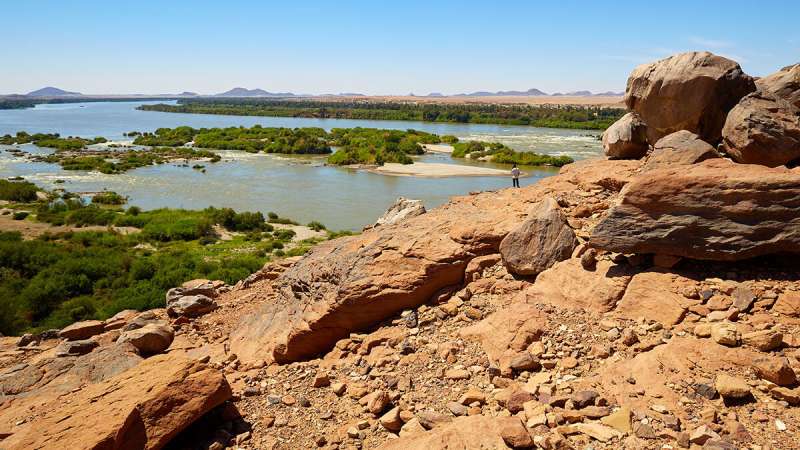New research uses profiles of major rivers, like the Nile, pictured here, to trace the history of uplift across the African continent. Credit: Vaido Otsar, CC BY-SA 4.0
The continent of Africa has a distinctive physical geography—an "egg carton" pattern of basins and swells—that researchers attribute to plumes of mantle rocks rising beneath a tectonic plate. Marine fossils on mountaintops in African and Arabian deserts suggest that until about 30 million years ago, those portions of the landscape were at or below sea level. But the spatial and temporal evolution of this uplift process is still not well defined. In a new study, O'Malley et al. use the profiles of the continent's major rivers to trace the evolution of the landscape in space and time.
To test the idea that rivers might serve as "tape recorders" for mantle processes, the team focused on Africa, Arabia, and Madagascar, where regional uplift patterns are relatively well constrained during the Cenozoic period. They applied a closed-loop modeling strategy that involved inverting more than 4,000 river profiles to recover signals of regional uplift and validating those signals with geological observations.
The team used dynamic forward landscape simulations to evaluate the influence of such factors as precipitation and drainage divide migration, as well as to test the assumptions used in the inverse modeling of river profiles. Although these assumptions are still a matter of debate, this study showed that inverse modeling of river profiles across the study area recovers an uplift history that fits observations, and landscape simulations using these uplift histories predict drainage networks, paleotopography, and deltaic sedimentation histories that match data. This result remains true when precipitation rates vary across space and time. Overall, this study suggests that calibrated inverse modeling of river profiles can be successfully used to study landscape evolution.
More information: C. P. B. O'Malley et al, Large‐Scale Tectonic Forcing of the African Landscape, Journal of Geophysical Research: Earth Surface (2021). DOI: 10.1029/2021JF006345
Provided by Eos
























